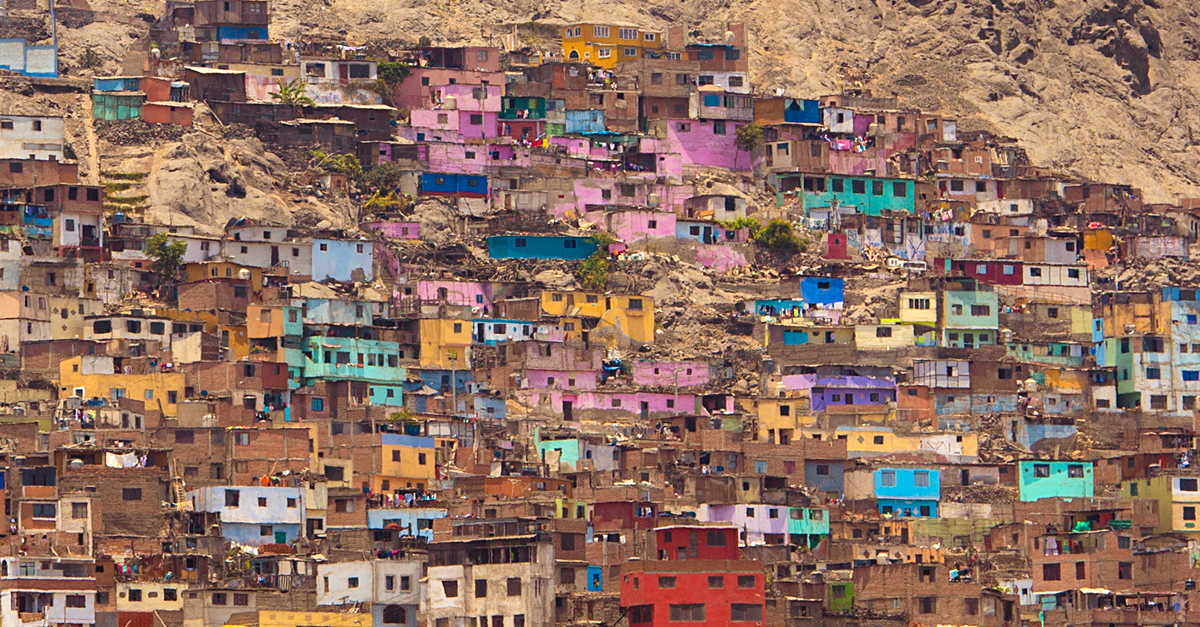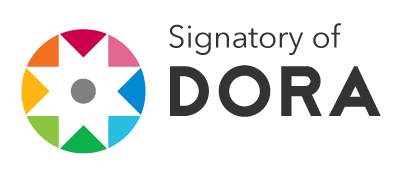Full-text of the article is available for this language: Español.
Patterns of social behavior among informal workers during extreme events: lessons from social life during the Covid-19 pandemic in Lima, Peru
Received:
10 May 2023,
Accepted:
28 August 2023,
Published:
11 September 2023

Abstract
This study analyzes changes in social life during the pandemic and the early stages of the post-pandemic period within a population characterized by high levels of informality in Lima, particularly the textile district of Gamarra, encompassing 89,123 people. A qualitative approach was adopted, based on 62 semi-structured interviews with garment manufacturers, in-store traders, and street vendors. Two distinct moments could be identified: a) experiences confronting the shock induced by the Covid-19 pandemic; and b) experiences of reconfiguring work and daily life, alongside strategies adopted by the population. In conclusion, the study suggests that some elements of daily life acquired during the Covid-19 pandemic may carry over into the future, inducing society to place greater emphasis on preventive measures against emerging risks, including behaviors related to hygiene and health, fostering closer family ties, increased utilization of digitalization and hybrid work models, and the cultivation of enhanced social capital.
Keywords: Pandemics, Work-Life Balance, Social Vulnerability, Qualitative Research, Peru
Categories: Work
References
1. Organizacion Internacional del Trabajo. Panorama laboral 2022 América Latina y el Caribe [Internet]. Lima: OIT; 2022 [citado 10 nov 2022]. Disponible en: https://tinyurl.com/62zamy6e.
2. Laurell A. Contradicciones en salud: Sobre acumulación y legitimidad en los gobiernos neoliberales y sociales de derecho en América Latina. Saúde em Debate. 2014;38(103):853-871.
Crossref
| Google Scholar
3. Maceira D. Caracterización del sistema de salud argentino: Debate en el contexto Latinoamericano. Revista Estado y Políticas Públicas. 2020;14:155-179.
4. Sánchez-Puerta M, Ocampo-Salazar C, García Callejas D. Informalidad, innovación y resiliencia en medio de la pandemia o el triunfo del espíritu sobre la materia: Emociones, sufrimientos y sueños. Revista En-Contexto. 2022;11(18).
Crossref
| Google Scholar
5. Zambrano-Mendoza J, Macías-Zambrano N. Estrategia defensiva de los vendedores ambulantes de la zona céntrica de Portoviejo en tiempos del Covid – 19. Polo del Conocimiento. 2021;6(3):1820-1842.
6. Aziani A, Bertoni GA, Jofre M, Riccardi M. Covid-19 and organized crime: Strategies employed by criminal groups to increase their profits and power in the first months of the pandemic. Trends in Organized Crime. 2023;26(2):114–135.
Crossref
| PubMed
| Google Scholar
7. Fahlberg A, Martins C, de Andrade M, Costa S, Portela J. The Impact of the Pandemic on Poor Urban Neighborhoods: A Participatory Action Research Study of a “Favela” in Rio de Janeiro. Socius: Sociological Research for a Dynamic World. 2023;9.
Crossref
| PubMed
| Google Scholar
8. Martín Palomo MT, Venturiello MP. Repensar los cuidados desde lo comunitario y las poblaciones vulnerables: Buenos Aires y Madrid durante la pandemia de SARS-CoV-2. Apuntes, Revista de Ciencias Sociales. 2021;48(89):127-161.
Crossref
| Google Scholar
9. Cohen JH, Mata-Sánchez ND. Challenges, inequalities and COVID-19: Examples from indigenous Oaxaca, Mexico. Global Public Health. 2021;16(4):639-649.
Crossref
| PubMed
| Google Scholar
10. Johns Hopkins Coronavirus Resource Center. Mortality analysis [Internet]. Baltimore: Johns Hopkins University; 2022 [citado 6 nov 2022]. Disponible en: https://tinyurl.com/yts42xa6.
11. El Peruano. Decreto Supremo Nº044-2020-PCM: Decreto Supremo que declara Estado de Emergencia Nacional por las graves circunstancias que afectan la vida de la Nación a consecuencia del brote del COVID-19 [Internet]. 15 mar 2020 [citado 6 nov 2022]. Disponible en: https://tinyurl.com/53fktsrj.
12. Instituto Nacional de Estadística e Informática. Población peruana alcanzó los 33 millones 396 mil personas en el año 2022 [Internet]. Lima: INEI; 2022 [citado 21 nov 2022]. Disponible en: https://tinyurl.com/y457a5b5.
13. Sociedad de Comercio Exterior del Perú. Informalidad peruana en alza: ¿Cómo nos posicionamos en la región? [Internet]. Lima: Comex Perú; 2022 [citado 10 dic 2022]. Disponible en: https://tinyurl.com/yc4hrnvn.
14. Instituto de Estudios Peruanos, OXFAM. Encuesta Nacional de Percepción de Desigualdades - ENADES 2022 [Internet]. Perú: OXFAM; 2022 [citado 10 ene 2023]. Disponible en: https://tinyurl.com/yk6cuu7r.
15. Comisión Económica para América Latina y el Caribe. Índice de concentración de Gini según área geográfica [Internet]. Santiago de Chile: CEPALSTAT; 2018 [citado 5 abr 2023]. Disponible en: https://tinyurl.com/ms2hce27.
16. Sihuacuyo Rodríguez JL, Arisaca Llanque LM. Infracciones tributarias y la utilidad de las empresas del emporio de Gamarra durante los periodos 2012 - 2015, Lima, Perú. [Tesis de bachiller]. Lima: Universidad Peruana Unión, Facultad de Ciencias Empresariales; 2017. Disponible en: https://tinyurl.com/rak8jyep.
17. Aguiló JC. Pandemia global y respuestas estatales: Viabilidades políticas para un bienestar “desmercantilizado” en clave latinoamericana. Utopía y Praxis Latinoamericana. 2021;26(94):272-282.
18. Ubasart-González G, Minteguiaga A. Esping-Andersen en América Latina: El estudio de los regímenes de bienestar. Política y Gobierno. 2017;24(1):213-236.
19. Niedzwiedz CL, Green MJ, Benzeval M, Campbell D, Craig P, Demou E, et al. Mental health and health behaviours before and during the initial phase of the COVID-19 lockdown: longitudinal analyses of the UK Household Longitudinal Study. Epidemiology & Community Health. 2020;75(3):224-231.
Crossref
| Google Scholar
20. Schudy A, Zurek K, Wiśniewska M, Piejka A, Gawȩda L, Okruszek L. Mental well-being during pandemic: The role of cognitive biases and emotion regulation strategies in risk perception and affective response to covid-19. Frontiers in Psychiatry. 2020;11:1-7.
Crossref
| PubMed
| Google Scholar
21. Southwick SM, Bonanno GA, Masten AS, Panter-Brick C, Yehuda R. Resilience definitions, theory, and challenges: interdisciplinary perspectives. European Journal of Psychotraumatology. 2014;1(5):1-14.
Crossref
| PubMed
| Google Scholar
22. Vella C, Pai NB. A theoretical review of psychological resilience: Defining resilience and resilience research over the decades. Archives of Medical Health Sciences. 2019;7(2):233-239.
Crossref
| Google Scholar
23. Hampshire A, Hellyer PJ, Trender W, Chamberlain SR. Insights into the impact on daily life of the COVID-19 pandemic and effective coping strategies from free-text analysis of people’s collective experiences. Interface Focus. 2021;11(6):1-11.
Crossref
| PubMed
| Google Scholar
24. Rothe J, Buse J, Uhlmann A, Bluschke A, Roesneer V. Changes in emotions and worries during the COVID-19 pandemic: an online-survey with children and adults with and without mental health conditions. Child and Adolescent Psychiatry and Mental Health. 2021;15(11):1-9.
Crossref
| PubMed
| Google Scholar
25. Park J. Institutions matter in fighting COVID-19: Public health, social policies and the control tower in South Korea. In: Greer SL, King EJ, Massard da Fonseca E, Peralta-Santos A, eds. Coronavirus politics: The comparative politics and policy of COVID-19. Michigan: University of Michigan Press; 2021. p. 105-126.
26. Jarman H. State responses to the COVID-19 pandemic: Governance, surveillance, coercion, and social policy. In: Greer SL, King EJ, Massard da Fonseca E, Peralta-Santos A, eds. Coronavirus politics: The comparative politics and policy of COVID-19. Michigan: University of Michigan Press; 2021. p. 51-64.
27. Levin K. Group decision and Social Change. In: Newcomb, T, Hartley E. Readings in social psychology, Holt, Rinehart & Winston. New York: Editorial Committee; 1947. p. 197-211.
28. Berger P, Luckmann T. La construcción social de la realidad. Buenos Aires: Amorrortu editores; 1968.
29. Olivier de Sardan JP. Anthropology and development: Understanding contemporary social change. London: Zed Books; 2005.
30. Goffman E. Ritual de la interacción. Buenos Aires: Tiempo Contemporáneo; 1970.
31. Simmel G. Sociología: estudio sobre las formas de socialización. México: Fondo de Cultura Económica; 2005.
32. Keck M, Sakdapolrak P. What is social resiliencia? Lessons learned and ways forward. Erdkunde. 2013;67(1):5-19.
Crossref
| Google Scholar
33. Instituto Nacional de Estadística e Informática. Características de las Empresas del Emporio Comercial de Gamarra, 2017 [Internet]. Lima: INEI; 2018 [citado 10 nov 2022]. Disponible en: https://tinyurl.com/7rvcsku7.
34. Galicia Vidal SR. Derecho e informalidad: explicaciones alternativas a la relación entre el derecho laboral y la informalidad a partir del caso de Gamarra [Tesis de Licenciatura]. Lima: Pontificia Universidad Católica del Perú; 2017.
35. Gonzales J. Redes de la informalidad en Gamarra. Lima: Universidad Ricardo Palma; 2001.
36. Cohen N, Seid G. Producción y análisis de datos cualitativos. En: Cohen N, Rojas G. Metodología de la investigación ¿para qué? La producción de los datos y los diseños [Internet]. Buenos Aires: Teseo; 2019 [citado 18 nov 2022]. p. 203-227. Disponible en: https://tinyurl.com/2s392myx.
Crossref
| Google Scholar
37. Blanc J, Louis EF, Castor C, Jean-Louis G. What the world could learn from the Haitian resilience while managing COVID-19: Psychological trauma: theory. Research, Practice and Policy. 2020;12(6):569-571.
Crossref
| PubMed
| Google Scholar
38. Rojas M, Luque J. “Estamos de paso”: Informalidad y ciudadanía precaria como proceso de despolitización: El caso del emporio comercial Gamarra en Lima (2012-2018). Revista del Centro de Investigación de la Universidad La Salle. 2019;13(51):41-66.
Crossref
| Google Scholar
39. Adler L. Redes sociales: ensayos de antropología latinoamericana. México: FLACSO; 2001.
40. Grupo de Análisis para el Desarrollo. Potenciales focos de contagio del COVID-19: Mercados y supermercados [Internet]. Lima: Grade; 2020 [citado 5 dic 2022]. Disponible en: https://tinyurl.com/3hnpetfs.
41. Molina C. La familia ante la pandemia del COVID-19. Ius et Praxis. 2020;50(50-51):23-29.
Crossref
| Google Scholar
42. Lacasta Reverte MA, Torrijos M, López-Pérez Y, Carracedo D, Pérez T, Casado C, et al. Impacto emocional en pacientes y familiares durante la pandemia por COVID-19. Medicina Paliativa. 2020;27(3):201-208.
Crossref
| Google Scholar
43. Oaakla. Speedtest Global Index [Internet]. 2022 [citado 10 ago 2023]. Disponible en: https://tinyurl.com/utwe5erb.
44. Abate-Flores C, Urtecho-Osorto OR, Agüero M. Efectos psicológicos del confinamiento social por COVID-19 en la población hondureña. Ciencia y Tecnología. 2020;13(25):21-33.
Crossref
| Google Scholar
45. Kim J, Kim Y, Ha J. Changes in daily life during the COVID-19 Pandemic among South Korean older adults with chronic diseases: A qualitative study. International Journal of Environmental Research and Public Health. 2021;18(13):6781.
Crossref
| PubMed
| Google Scholar
46. Hammons A, Robart R. Family food environment during the COVID-19 pandemic: A qualitative study. Children. 2021;8(5):354.
Crossref
| PubMed
| Google Scholar
47. Turner S, Langill JC, Nguyen BN. The utterly unforeseen livelihood shock: COVID-19 and street vendor coping mechanisms in Hanoi, Chiang Mai and Luang Prabang. Singapore Journal of Tropical Geography. 2021;42(3):484-504.
Crossref
| PubMed
| Google Scholar
48. Rahman Swarna N, Anjum I, Nusrat Hamid N, Ahmed Rabbi G, Islam T, Tanzila Evana E, et al. Understanding the impact of COVID-19 on the informal sector workers in Bangladesh. Plos One. 2022;17(3):1-20.
Crossref
| PubMed
| Google Scholar
49. Lenshie N, Ma’aku Joshua M, Ezeibe C. COVID-19 pandemic and informal women workers in peri-urban communities in Nigeria. Environment Complete. 2021;26(4):754-769.
Crossref
| Google Scholar
50. Donga G, Roman N, Adebiyi B, Omukunyi B, Chinyakta R. Lessons learnt during COVID-19 lockdown: A qualitative study of South African families. International Journal of Environmental Research and Public Health. 2021;18(23):12552.
Crossref
| PubMed
| Google Scholar
51. Waisbord S. Los falsos profetas de la pospandemia. En: Follari RA, Canelo PV, Sztulwark D, Palermo VA, González H, et al. El futuro después del COVID-19. Buenos Aires: Jefatura de Gabinete de Ministros; 2020. p. 123-130.
52. Sardan O. La revanche des contextes: Des mésaventures en ingénierie sociale en Afrique et au-delà. Paris: Karthala; 2021.
53. Mitchell R, Nu G. A ‘new normal’: Harnessing the experience of COVID-19 for sustained improvements in global emergency care. The Lancet Regional Health, Western Pacific. 2020;1:100012.
Crossref
| PubMed
| Google Scholar
54. Shafaq Shah S, Ali Shah A, Memon F, Ahmad Kemal A, Soomro, A. Online learning during the COVID-19 pandemic: Applying the self-determination theory in the ‘new normal’. Revista de Psicodidáctica. 2021;26(2):169-178.
Crossref
| Google Scholar
55. Strain MR. How the new normal will look like the old normal [Internet]. 2021 [citado 10 dic 2022]. Disponible en: https://tinyurl.com/46892wwv.
56. Dávila Morán RC. Empleo en la economía informal: mayor amenaza que la pandemia del COVID-19. Telos. 2021;23(2):403-417.
Crossref
| Google Scholar
57. Mendieta D. How will the post-pandemic society be? Opinión Jurídica. 2020;19(39):5-15.
Crossref
| Google Scholar
58. Instituto Nacional de Estadística e Informática. Informe técnico Perú: estimación de la vulnerabilidad económica a la pobreza monetaria [Internet]. Lima: INEI; 2020 [citado 10 dic 2022]. Disponible en: https://tinyurl.com/y65rm3x4.










